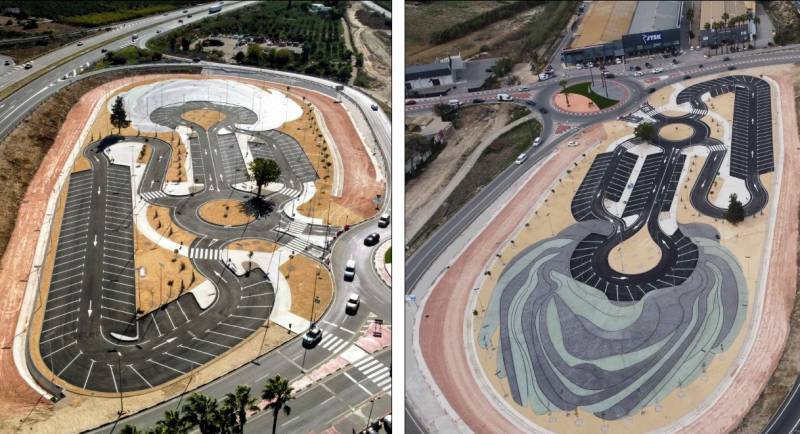
To be listed on the haciendadelalamo TODAY MAP please call +34 968 018 268.
The Legend of La Armengola in Orihuela
Orihuela has a Moorish castle and was a target of the Christian Reconquist forces
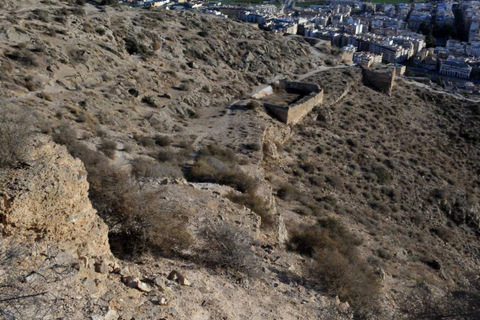 Orihuela, along with many other cities across the southern quarter of Spain, celebrates fiestas commemorating the struggles between Moors and Christians, colourful fiestas focusing on the period of transition at the end of 500 years of Moorish reign when the forces of the Christian Kingdoms of northern Spain reconquered the south and brought it under Christian control at the beginning of the mediaeval period.
Orihuela, along with many other cities across the southern quarter of Spain, celebrates fiestas commemorating the struggles between Moors and Christians, colourful fiestas focusing on the period of transition at the end of 500 years of Moorish reign when the forces of the Christian Kingdoms of northern Spain reconquered the south and brought it under Christian control at the beginning of the mediaeval period.
The Moors dominated southern Spain from their initial invasion in 713 until the Christian Reconquist gradually drove them out of the country. The Reconquist began in the 12th century, the powerful Kingdoms of Aragón and Castile y León slowly pushing down into the South, their incursions ever deeper into the territory of the Moors, winning castles, then losing them again, a slow process which gained true momentum in the middle of  the 13th century, when alliances between these 2 powerful kingdoms resulted in the marriage of Prince Alfonso of Castile ( later to become Alfonso X, El Sabio) and Violant of Aragón, daughter of Jaime I of Aragón, a powerful warrior King.
the 13th century, when alliances between these 2 powerful kingdoms resulted in the marriage of Prince Alfonso of Castile ( later to become Alfonso X, El Sabio) and Violant of Aragón, daughter of Jaime I of Aragón, a powerful warrior King.
By 1242, the forces of Castile y León had made substantial gains, and Orihuela capitulated to Alfonso on April 17th 1242, although the local Moorish administrative structure was left in place, with local rulers maintaining the peace, under the Christians. Alfonso went on to take Murcia in 1243 and a surrender agreement, the treaty of Alcáraz signed in 1243 gave him control of the area.
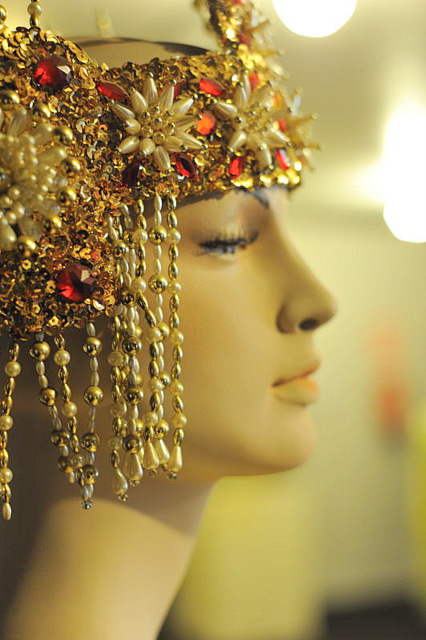 In Orihuela, legend recounts that a plot to retake Orihuela by the Moors was foiled on 17th July 1243, this being the date around which the fiestas focus in Orihuela, although these dates are confusing as the main rebellion by the Moors was not until more than 20 years later, when Jaime I of Aragón quashed the Mudejár uprising in 1266, so there seems to be a little poetic adjustment of the dates.
In Orihuela, legend recounts that a plot to retake Orihuela by the Moors was foiled on 17th July 1243, this being the date around which the fiestas focus in Orihuela, although these dates are confusing as the main rebellion by the Moors was not until more than 20 years later, when Jaime I of Aragón quashed the Mudejár uprising in 1266, so there seems to be a little poetic adjustment of the dates.
It was a turbulent period, as although the Moorish rulers in this area of Spain capitulated fairly quickly, the early promises of tolerance and co-habitation were soon broken and within 20 years, the Moors were once again in rebellion, taking the area back from Alfonso.
In response, his father-in-law, Jaime I of Aragón, sent in troops to quash the uprising and by 1266 Orihuela, and other territories, were returned to Alfonso and the Christian forces.
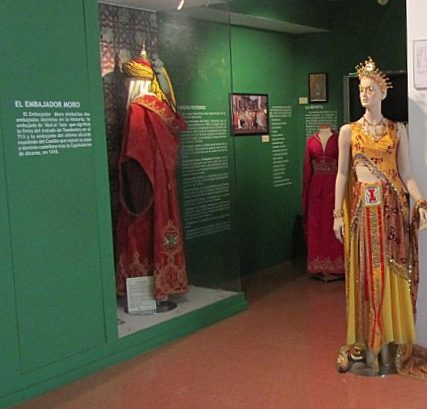 The Moors who refused to convert to Christianity were thrown out, many of them heading to the only remaining Moorish stronghold in Spain: the Kingdom of Granada which continue to hold on to part of Spain until 1492 when the Moors were defeated completely and Isabella and Ferdinand ordered their expulsion en-masse.
The Moors who refused to convert to Christianity were thrown out, many of them heading to the only remaining Moorish stronghold in Spain: the Kingdom of Granada which continue to hold on to part of Spain until 1492 when the Moors were defeated completely and Isabella and Ferdinand ordered their expulsion en-masse.
Orihuela recounts a legend, known as the legend of the Armengola, which relates to this turbulent period of uprising, when Moors who had been born in this area, their families farming it for centuries, rebelled against the unjust and harsh laws and taxes imposed on them by the Christian invaders.
According to tradition, Benzaddón, the local ruler of Orihuela, lived in the citadel, which can still be visited today high above the city, and beneath the castle, in the village which lay clustered at its foot, lived a man named Pedro Armengol ( a Christian) with his wife and daughters. His wife, known locally as La Armengola, was nursemaid to the children of Benzaddón, and therefore was able to enter the fortress as and when she chose without being treated as a hostile agent.
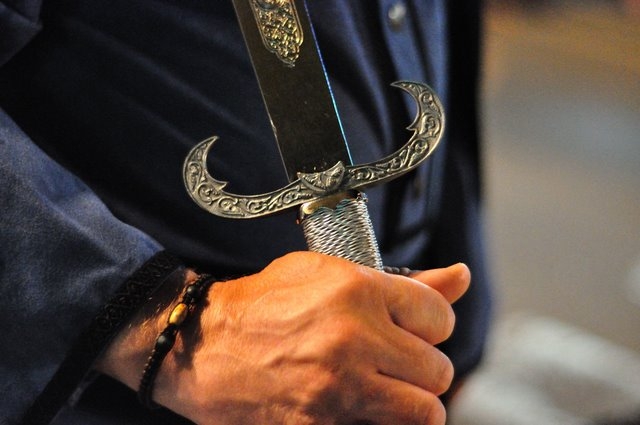 Due to the harsh treatment meted out to the Moors by Alfonso, a series of plots were hatched to oust the Christian forces, and Benzaddón joined with the Moors from the Kingdom of Murcia to put the Christians to the sword, hatching a plan to attack on 16th July.
Due to the harsh treatment meted out to the Moors by Alfonso, a series of plots were hatched to oust the Christian forces, and Benzaddón joined with the Moors from the Kingdom of Murcia to put the Christians to the sword, hatching a plan to attack on 16th July.
However, La Armengola, who was frequently inside the castle, caught wind of the plot and told her fellow Christians about the plans to slaughter them all. Deciding to strike first, she dressed two strong young men named Ruidoms and Juan de Arnúm in the clothes of her daughters, and took them into the citadel, along with her husband, where they hid until nightfall and took the guards by surprise on the eve of the festival of Saint Rufina and Saint Justa.
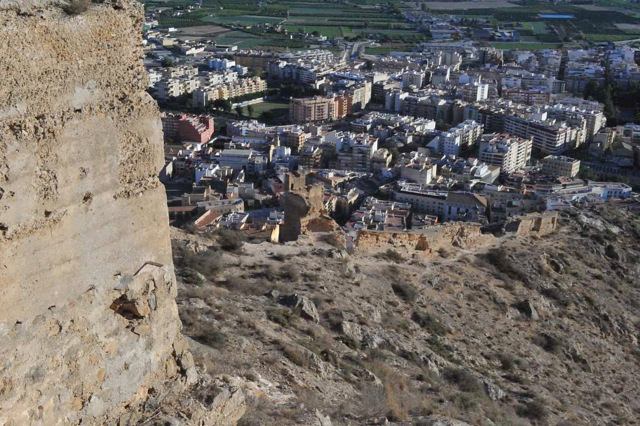 Legend recounts that the figures of the two saints appeared as lights in the sky, illuminating the skirmish between the four Christians and their Moorish opponents. Armengola herself took up arms and joined the struggle, showing enormous courage and strength, and between the four of them they managed to kill the guards and Benzaddón before placing the symbol of the cross of christianity on the highest battlement of the fortress.
Legend recounts that the figures of the two saints appeared as lights in the sky, illuminating the skirmish between the four Christians and their Moorish opponents. Armengola herself took up arms and joined the struggle, showing enormous courage and strength, and between the four of them they managed to kill the guards and Benzaddón before placing the symbol of the cross of christianity on the highest battlement of the fortress.
Their acts co-incided with the arrival of King Jaime’s army, foiling the plot to Christians, and for this reason the fiesta to celebrate the freedom of the city from the clutches of the Moors is held on 17th July.
 The night before the main fiesta lanterns are lit on the ruined battlements of the castle, and on the day itself the town council dress up in all the festive paraphernalia and carry the city’s banner to a solemn Holy Mass which is held in the church devoted to Santa Justa and Santa Rufina. Here the tale of Pedro Armengol’s wife is re-told every year.
The night before the main fiesta lanterns are lit on the ruined battlements of the castle, and on the day itself the town council dress up in all the festive paraphernalia and carry the city’s banner to a solemn Holy Mass which is held in the church devoted to Santa Justa and Santa Rufina. Here the tale of Pedro Armengol’s wife is re-told every year.
There is a museum dedicated to the Moors and Christians fiestas in Orihuela which is open to the public and can be visited as part of a tourist route around Orihuela, showing some of the sumptuous costumes worn during the fiestas. Click Museo de la Reconquista











